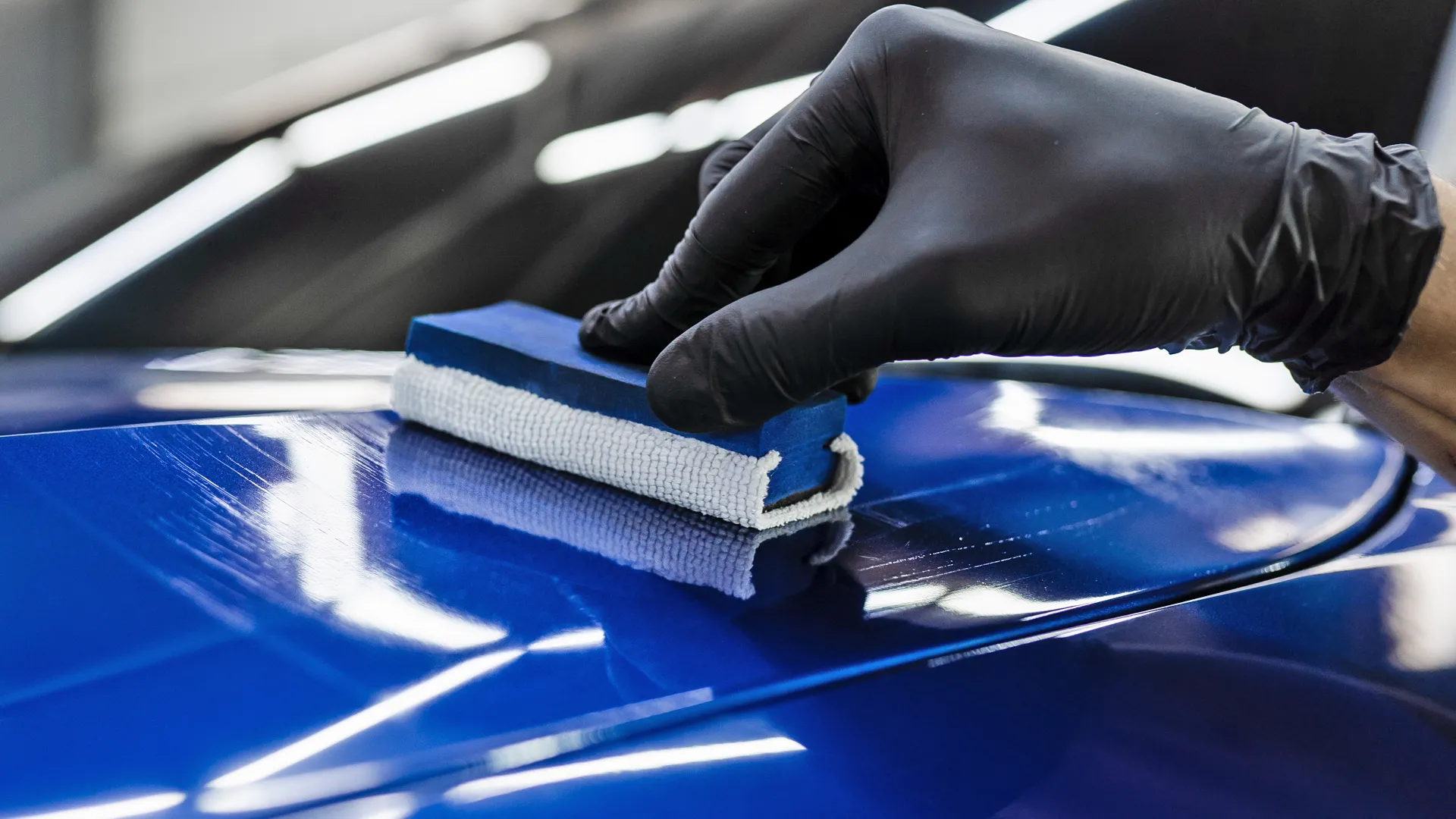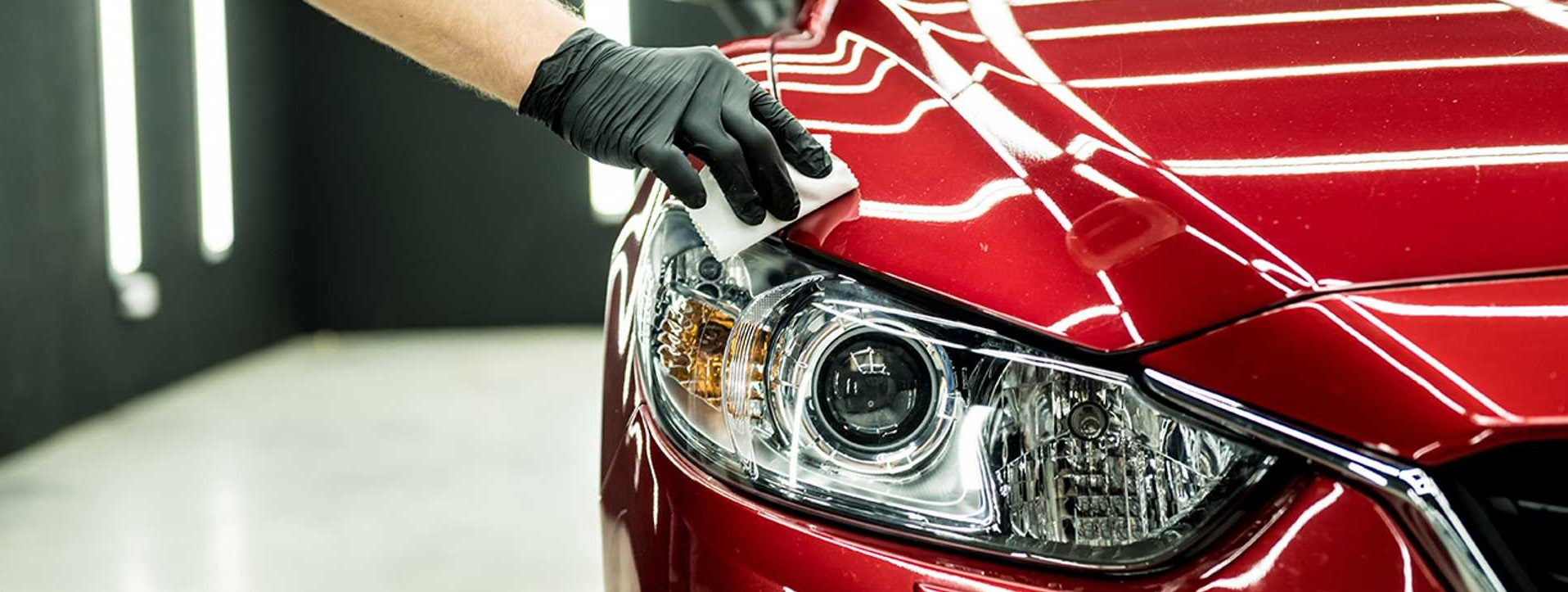Exploring the Scientific Research Behind Car Ceramic Coating and Its Safety Properties
The science of car ceramic coating provides a fascinating research study in advanced vehicle defense. Made up mostly of silicon dioxide and polymers, these layers develop a durable bond with car paint. This communication improves durability versus environmental threats while supplying hydrophobic benefits. Nonetheless, the details of just how these finishings work and their long-lasting benefits continue to be less recognized. Unboxing these information exposes why ceramic finishings are ending up being a favored choice for vehicle care
What Is Ceramic Coating?
Ceramic coating is a fluid polymer that chemically bonds to the surface area of a car's paint. This sophisticated protective layer improves longevity and supplies premium resistance to ecological variables. Unlike typical wax or sealants, which provide momentary protection, ceramic layers produce a lasting guard that can endure severe problems such as UV rays, acidic contaminants, and extreme weather condition. When used properly, the coating develops a hydrophobic surface, creating water to bead and slide off, which aids in maintaining the lorry's tidiness. Additionally, it provides enhanced gloss and deepness to the paint, making the automobile show up more refined and vivid. The application procedure normally includes comprehensive surface area prep work, including cleaning and sprucing up, to guarantee peak bonding. Therefore, ceramic coatings are coming to be increasingly prominent among car fanatics and those looking for to secure their investments, promising to maintain the car's aesthetic charm while minimizing the regularity of maintenance.
The Make-up of Ceramic Coatings
The detailed solution of ceramic layers largely is composed of silicon dioxide (SiO2), which is acquired from natural sources like quartz and sand. This vital component offers the structure for the coating's durability and protective high qualities. In enhancement to SiO2, ceramic layers frequently include different polymers and additives that improve bond, adaptability, and resistance to ecological factors. These compounds work synergistically to create a robust barrier against impurities such as dust, chemicals, and UV rays.Furthermore, some formulations incorporate titanium dioxide (TiO2) or various other nanomaterials, which can increase the coating's hydrophobic buildings, leading to improved water repellency. The specific make-up can differ greatly among manufacturers, impacting performance and longevity. Inevitably, the combination of these elements culminates in a safety layer that not only boosts the visual appeal of lorries yet also serves to lengthen their life expectancy by shielding the surface from prospective damages.
Just How Ceramic Coatings Job
Understanding exactly how ceramic finishings function involves discovering their chemical composition, which adds to their protective qualities. The application process is important for achieving perfect results, while longevity and resilience aspects figure out the coating's efficiency over time. With each other, these elements highlight the benefits and efficiency of ceramic finishes for vehicle defense.
Chemical Composition Explained
While numerous car owners seek resilient security for their automobiles, the chemical composition of ceramic layers plays a critical function in their performance. These coatings largely contain silicon dioxide (SiO2), which is stemmed from natural minerals. This substance creates a strong bond with the automobile's paint, producing a resilient, safety layer. Additionally, many ceramic finishes contain titanium dioxide (TiO2), improving their hydrophobic residential properties and resistance to UV rays. The existence of polysiloxanes can better improve adaptability and sturdiness. With each other, these elements add to the coating's capacity to push back water, dust, and impurities, while additionally supplying a high-gloss finish. Comprehending this chemical foundation assists car proprietors appreciate the robust security supplied by ceramic coverings.
Application Refine Overview
Using ceramic finishes entails a thorough process that ensures suitable bonding and defense for the automobile's surface area. Originally, extensive cleaning and purification of the car's exterior are done to eliminate dust, grime, and previous waxes. This step verifies that the surface area is devoid of impurities that might hinder adhesion. Following this, the paint is usually polished to boost clarity and eliminate any kind of flaws. Once prepared, the ceramic coating is used in tiny sections making use of an applicator pad, allowing for uniform protection. The coating is then delegated heal, creating a solid chemical bond with the surface area. Correct curing times and conditions are important, as they confirm the coating attains its maximum performance and safety qualities.
Longevity and Sturdiness Variables
Ceramic finishings are made to supply lasting defense with their innovative chemical make-up, which produces a durable barrier against ecological impurities. The sturdiness of these finishings is affected by variables such as the thickness of the application, the high quality of the product, and the problems under which the car is subjected. Top quality ceramic finishings can last a number of years, standing up to scrapes, UV rays, and chemical spots. Proper upkeep, including normal cleaning and regular reapplication, can further boost durability. In addition, environmental factors like climate and exposure to contaminants can affect the life-span of the coating. On the whole, when applied and maintained properly, ceramic layers provide phenomenal durability, making them a popular option for car lovers looking for to maintain their car's appearance.
Hydrophobic Properties and Water Repellency
Hydrophobic residential or commercial properties are a characteristic of quality car ceramic finishes, considerably boosting the vehicle's surface area performance. These finishes produce a molecular bond with the car's paint, resulting in a surface area that repels water successfully. When water enters into call with a ceramic-coated surface area, it beads up and rolls off, lessening the quantity of liquid that stays on the paint. This actions not just contributes to a visually pleasing look yet also lowers the buildup of contaminants such as dust, gunk, and roadway salts.The boosted water repellency results in easier cleaning and maintenance, as much less initiative is required to remove undesirable compounds. Furthermore, the hydrophobic nature of ceramic layers assists in stopping water areas, which the original source can mar the coating of uncoated surface areas. Overall, the consolidation of hydrophobic properties in ceramic finishes plays an important role in preserving the lorry's pristine appearance while simplifying maintenance.
Security Against Scratches and UV Damages
Car ceramic finishes supply significant protection versus scratches and UV damage. The scrape resistance device produces a long lasting layer that takes in effects, while the UV protecting benefits aid keep the lorry's paint honesty gradually. With each other, these attributes add to a longer-lasting and aesthetically appealing surface.
Scratch Resistance Mechanism
Making use of advanced innovation, ceramic coverings provide a durable guard versus scrapes and UV damages, boosting the durability and look of automobile surface areas. The scratch resistance device of these finishings is attributed to their special molecular framework, which develops a durable bond with the vehicle's paint. This bond creates a hard, protective layer that can absorb influences and withstand abrasions. Additionally, the smooth surface area of the coating minimizes friction, making it tough for impurities to adhere and trigger scratches. The chemical make-up of ceramic coatings commonly includes nanoparticles that enhance the safety layer, additional enhancing its resilience. Subsequently, vehicles treated with ceramic finishings exhibit noticeably improved scrape resistance contrasted to typical wax or sealers, making sure an excellent coating over time.
UV Protecting Benefits
The safety top qualities of ceramic layers extend beyond scratch resistance to consist of significant UV shielding advantages. These layers develop a robust obstacle that reflects damaging ultraviolet rays, securing the car's paint and underlying products. Long term exposure to UV radiation can result in fading, oxidation, and damage of the paint coating. By including ceramic coverings, car owners can successfully mitigate these risks, protecting the aesthetic appeal and stability of their autos. Furthermore, the UV blocking buildings add to improved durability, reducing the regularity of repainting and maintenance. Ultimately, the integration of ceramic layers supplies a detailed solution for safeguarding cars from the damaging results of sunlight direct exposure, ensuring a continual, vivid look gradually.
The Longevity and Maintenance of Ceramic Coatings

Frequently Asked Concerns
Can Ceramic Coating Be Applied to Any Kind Of Automobile?
Ceramic coating can be put on numerous kinds of automobiles, including automobiles, trucks, and motorcycles. Nonetheless, surface area preparation and compatibility with details products are vital for perfect bond and effectiveness of the coating.
Exactly How Much Does Ceramic Coating Normally Expense?
Ceramic coating commonly sets you back between $500 and $2,000, relying on factors such as automobile dimension, coating quality, and expert application. The investment can provide long-lasting security and improve the car's look over time.

Is Specialist Application Essential for Ideal Results?
The requirement of specialist application commonly depends upon desired results. Professionals normally guarantee correct surface prep work and application methods, resulting in excellent bonding and long life of the coating, which may be testing for unskilled people to achieve.
Can Porcelain Coatings Be Removed or Repaired?
Ceramic finishings can be gotten rid of or repaired, though the procedure may require specific solvents or techniques - Ceramic try this Coating Newark. Appropriate removal is necessary to stay clear of damage to the underlying surface area, stressing the value of specialist see this page assistance for suitable results
Just How Does Porcelain Coating Contrast to Conventional Wax?
The comparison between ceramic coating and standard wax discloses that ceramic finishes provide exceptional sturdiness, boosted security against ecological impurities, and longer-lasting luster, while wax needs more constant application and supplies less overall resistance to damages.